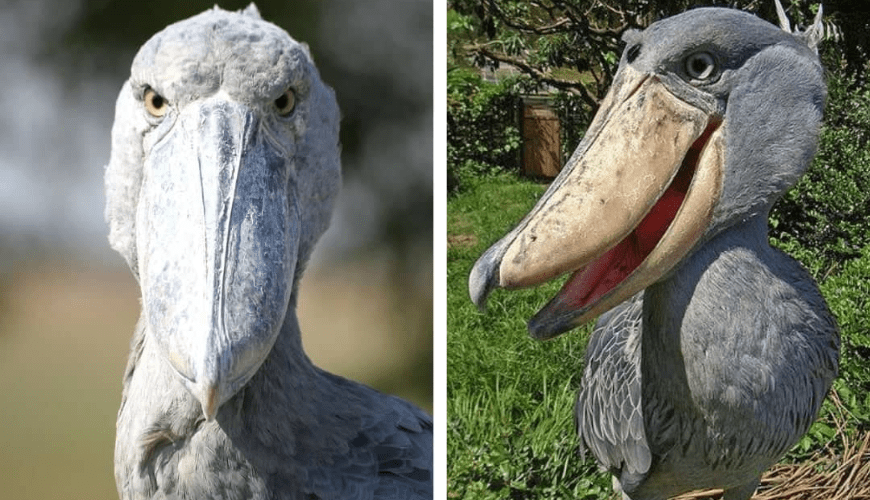The Shoebill (Balaeniceps rex) is a massive bird that looks like a stork. This bird’s other names include whale head, whale-headed stork, and shoe-billed stork. As the name implies, it has a large shoe-shaped bill. It was previously classified with the storks in the order of Ciconiiformes based on this morphology, but genetic evidence places it with the Pelecaniformes. The adults are mostly grey, while the juveniles are browner. From South Sudan to Zambia, these birds can be found in vast swamps in tropical east Africa.
Their primary diet consists of large fish such as lungfish, eels, and catfish. They also consume bizarre foods such as Nile monitor lizards, snakes, and baby crocodiles.
Systematics and taxonomy The Shoebill was known to the ancient Egyptians, but it was not classified until the nineteenth century. It was classified after skins and live specimens were eventually brought to Europe. John Gould named it Balaeniceps rex in 1850. The genus name is derived from the Latin words balaena, which means “whale,” and caput, which means “head,” which is abbreviated to ceps in compound words.
#1

It has a goofy charm appearance, but it also appears to be ready to attack at any time.
#2
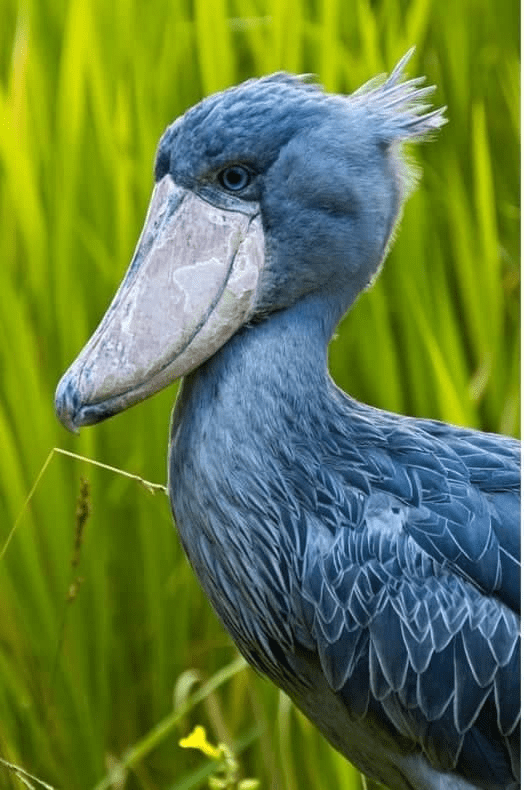
His name comes from its foot-long bill. It is five inches wide and has a sharp edge as well as a sharp hook on the end.
#3

Its massive bill enables it to consume large animals such as lungfish, tilapia, eels, snakes, baby crocodiles, and Nile monitor lizards.
#4

Shoebills can reach five feet in height and have an eight-foot wingspan. They have yellow eyes, gray feathers, white bellies, and a small feathered crest on their heads.
#5
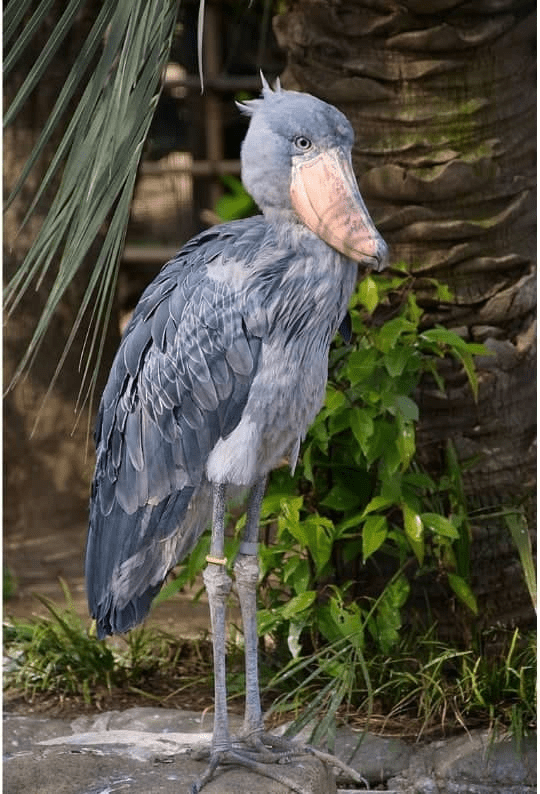
Their legs are long and thin, with large feet that are ideal for walking on the vegetation in freshwater marshes and swamps. They are found in East Africa, ranging from Ethiopia and South Sudan to Zambia.
#6

They were previously classified as storks, but genetic research has reclassified them as Pelecaniformes and the Balaenicipitidae family. Balaenicipitidae is large waterbirds related to pelicans and herons genetically.
#7

The shoebill eats frogs, lizards, watersnakes, snails, and rodents, in addition to large prey.
#8
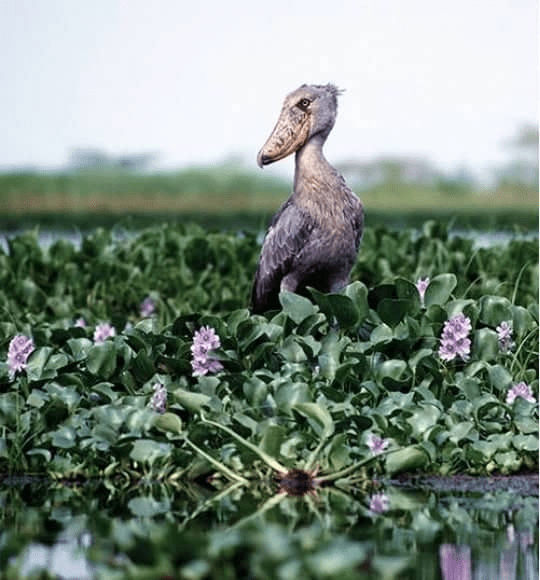
Because it is so tall, it can hunt for food in the shallows of swamps and on aquatic vegetation. The average height is between 3.5 and 4.5 feet, and the weight ranges from 9 to 15.5 (1 to 1.4 meters) (4 – 7 kg). The average wingspan is 7.5 to 8.5 feet (2.2 – 2.6m)
#9

Because of their elusive nature and difficult habitat, their population has declined, with estimates ranging from 5,000 to 8,000 individuals.
#10

BirdLife International has classified it as vulnerable due to habitat destruction, disturbance, and hunting. They require specific habitats for breeding, nesting, and hunting, and their swamps and marshes are gradually being converted into agricultural land or cattle grazing pastures.
#11
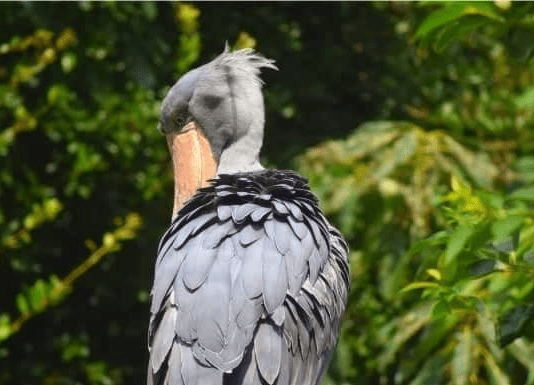
Their appearance is unusual; they appear to be dinosaurs. When viewed from various angles, they can appear quite menacing, peering down their long, razor-sharp beak with a hook at the tip.
#12

They sometimes appear cute, like cartoon characters, and their striking pale and blue-eyed genes make them appear unreal.
#13

The Shoebill is one of the slowest flapping birds, flying at only about 150 flaps per minute.
#14

The Shoebill has the world’s third longest beak, measuring up to 24cm (7.4 to 9.4 inches) in length and 20cm (7.4 to 9.4 inches) in width.
#15

The beak’s edge is razor sharp, allowing them to quickly decapitate their prey. They are known to decapitate their prey before devouring it whole.
#16
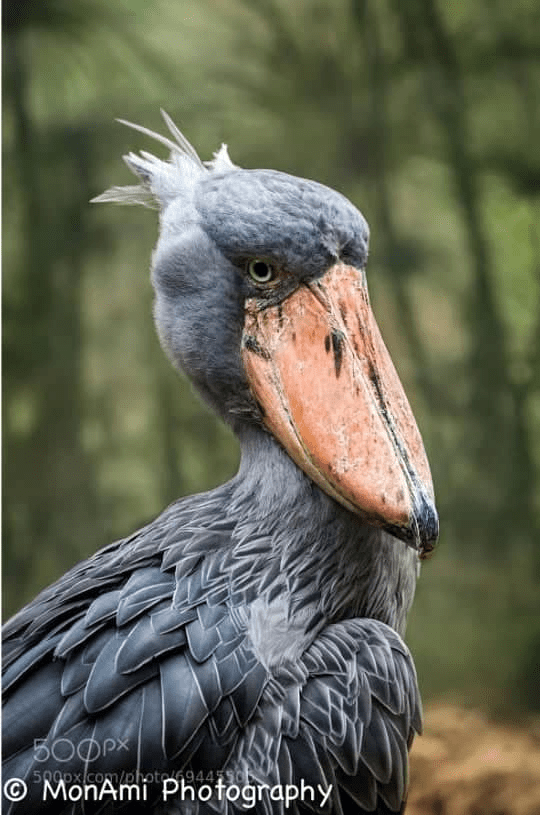
#17

#18
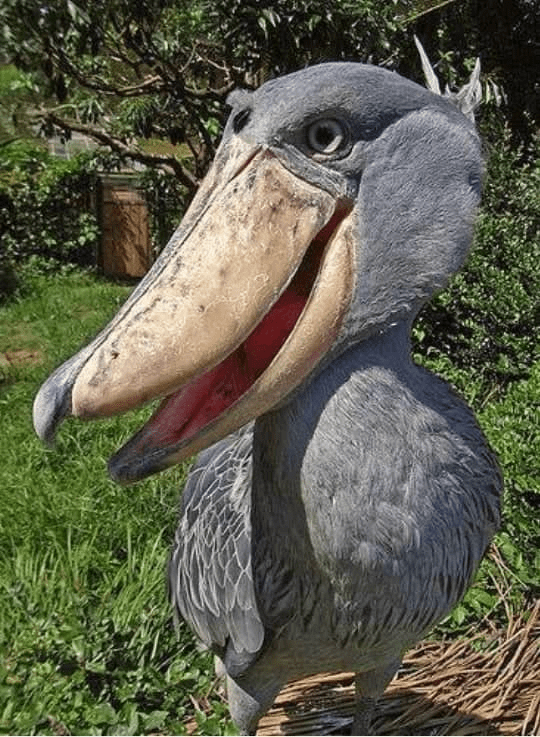
#19

#20
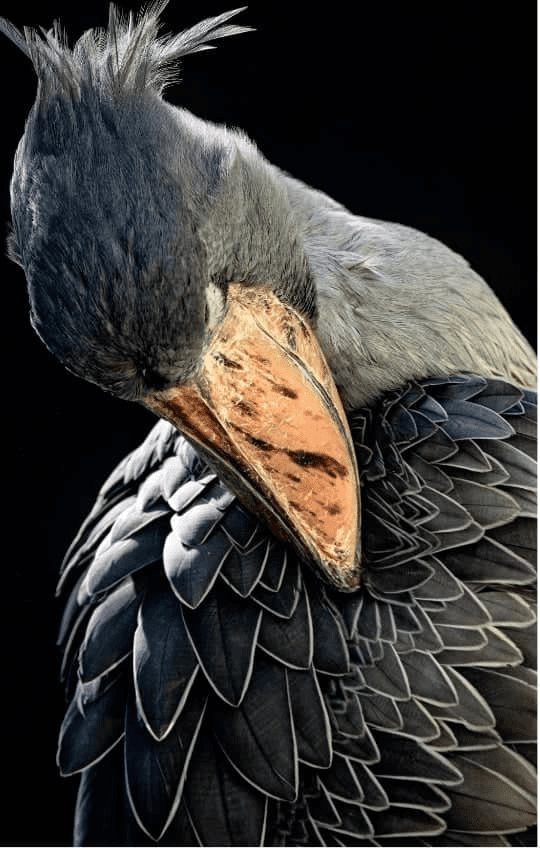
Hippos can sometimes help shoebills because they disturb fish and clear paths through swamps. As a result, the shoebill takes advantage of the disturbed fish in the water and strikes.

